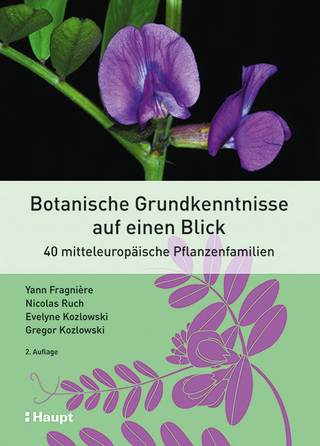
Opuntia spp.: Chemistry, Bioactivity and Industrial Applications
Springer International Publishing (Verlag)
978-3-030-78446-1 (ISBN)
The Opuntia fruits, commonly known as cactus pears or prickly pears, have been suggested by the Food and Agriculture Organization to be a promising and strategic crop in regions suffering from lack of water. In Mexico, India, South Africa, and the Mediterranean, the Opuntia fruits have become popular due to their nutritive value and health-promoting benefits, including antioxidant, antiulcerogenic and antiatherogenic traits and protective effects against LDL oxidation. Additionally, readily absorbable sugars, high vitamin C and mineral content, and a pleasant flavour make Opuntia tailor-made for novel foods.
Due to their ecological advantages, high functional value, and health-related traits, Opuntia fruits can be highly exploited in different food processing applications. For instance, Opuntia cactus fruits are used for the preparation of juices and marmalades; Opuntia cactus plants are used to feed animals in African and Latin American countries; Peruvian farmers cultivate Opuntia cactus for growing the cochineal (Dactylopius coccus) insect and producing the natural dye carmine; and the commercial production of food and non-food products from Opuntia has been established in Mexico, USA and several Mediterranean countries.
Opuntia spp.: Chemistry, Bioactivity and Industrial Applications creates a multidisciplinary forum of discussion on Opuntia cactus with special emphasis on its horticulture, post-harvest, marketability, chemistry, functionality, health-promoting properties, technology and processing. The text includes detailed discussion of the impact of traditional and innovative processing on the recovery of high-added value compounds from Opuntia spp. by-products. Later chapters explore the potential applications of Opuntia spp. in food, cosmetics and pharmaceutical products.
Mohamed Fawzy Ramadan is a Professor in the Agricultural Biochemistry Department at Zagazig University in Zagazig, Egypt. He has published more than 250 research papers and reviews in international peer-reviewed journals, as well as several books and book chapters. Tamer E. Moussa Ayoub is a Lecturer in the Department of Food Technology at Suez Canal University in Ismailia, Egypt. Sascha Rohn is a Professor in Institute of Food Technology and Food Chemistry in Technische Universität Berlin in Berlin, Germany.
1-Introduction to Opuntia spp.: Chemistry, bioactivity and Industrial Applications.- 2-South African perspective on Opuntia spp.: cultivation, human and livestock food and industrial applications.- 3-Ethnobotany, medicinal utilization and Systematics of Opuntia species from Deserts of Pakistan.- 4-Cactus Pear (Opuntia spp.) Species and Cultivars.- 5-Classification, Distribution and Morphological Characterization of Opuntia species.- 6-Cultivation and Cultural Practices of Opuntia spp.- 7-Molecular characterization of Opuntia spp.- 8-Genetic diversity and ecotypes of Opuntia spp.- 9-Potential attribute of crassulacean acid metabolism of Opuntia spp. production in water-limited conditions.- 10-Harvest and Postharvest Technology of Opuntia spp.- 11-Chemistry and functionality of Opuntia spp. nopal cladodes.- 12-Opuntia ficus-indica (L.) Mill. Bioactive Ingredients and Phyto-constituents.- 13-Opuntia Fiber and its Health-Related Beneficial Properties.- 14-Opuntia spp. chemical constituents and bioactive compounds, with particular regards to polyphenols.- 15-Profile and Biological Properties of the main Phenolic compounds in cactus pear (Opuntia spp.).- 16-Opuntia spp. essential oils.- 17-Antioxidant activity of Opuntia spp.: A review.- 18-Natural antimicrobial molecules from Opuntia spp. and their role in poultry nutrition.- 19-Genus Opuntia: A golden source of compounds with anti-inflammatory potential.- 20-Opuntia spp. benefits in chronic diseases.- 21-Traceability of Opuntia spp.- 22-Antidiabetic Activity of Opuntia spp.- 23-Anticancer Activity of Opuntia spp.- 24-Innovative technologies for the identification of chemical and bioactive compounds in Opuntia spp. plant, food and waste.- 25-Innovation technologies for extracting Opuntia spp. seed oil.- 26-Novel pectins from prickly pear (Opuntia albicarpa) fruits: structural features and rheological properties.- 27-Modern Technologies in Opuntia spp. Juice Processing.- 28-Novel Technologies in Juice Processing from Opuntia spp. Fruits.- 29-Potential use of prickly pear juice prepared from shelf-grown cultivars as an authentic and nutritional fruit supplement.- 30-Fermented Beverages from Opuntia species: Composition, Commercialization and Future Outlook.- 31-Opuntia spp. Marmalade.- 32-Opuntia pear peel as a source of functional ingredients and their utilization in meat products.- 33-Opuntia spp. Seed Oil.- 34-Prickly pear (Opuntia ficus indica) processing by extrusion-cooking.- 35-Opuntia spp. and Extruded Food Products.- 36-Opuntia spp. Extruded Food Products.- 37-Industrial uses of Opuntia spp. by-products.- 38-Bread Enrichment with Opuntia spp. Derivatives.- 39-Opuntia spp. products and by-products as a potential source of edible films and coatings.- 40-Microencapsulation technology: an alternative preservation method for Opuntia spp. derived products and their bioactive compounds.- 41-Prickly pear (Opuntia spp.) in animal and poultry feed.- 42-Industrial applications of Opuntia spp. (nopal, fruit and peel).- 43-Opuntia spp. as a source of sugars for the ethanol production.- 44-Opuntia spp. in biogas production.- 45-Opuntia spp. in dye-sensitized solar cells.- 46-Incorporation of Opuntia spp. into Food Systems.- 47-Opuntia spp. in cosmetics and pharmaceuticals.- 48-Food and non-food applications of Opuntia spp. seed oil.- 49-Opuntia spp. in the textile industry.- 50-Cactus pear as colorants and coloring foods: application in different food matrices.
| Erscheinungsdatum | 29.09.2022 |
|---|---|
| Zusatzinfo | XIX, 1059 p. 98 illus., 46 illus. in color. |
| Verlagsort | Cham |
| Sprache | englisch |
| Maße | 155 x 235 mm |
| Gewicht | 1278 g |
| Themenwelt | Naturwissenschaften ► Biologie ► Botanik |
| Technik ► Lebensmitteltechnologie | |
| Schlagworte | Antioxidants • Bioactive Compounds • Cactus pear • Functional Foods • Phenolic Compounds • Post-harvest • prickly pear |
| ISBN-10 | 3-030-78446-0 / 3030784460 |
| ISBN-13 | 978-3-030-78446-1 / 9783030784461 |
| Zustand | Neuware |
| Informationen gemäß Produktsicherheitsverordnung (GPSR) | |
| Haben Sie eine Frage zum Produkt? |
aus dem Bereich


